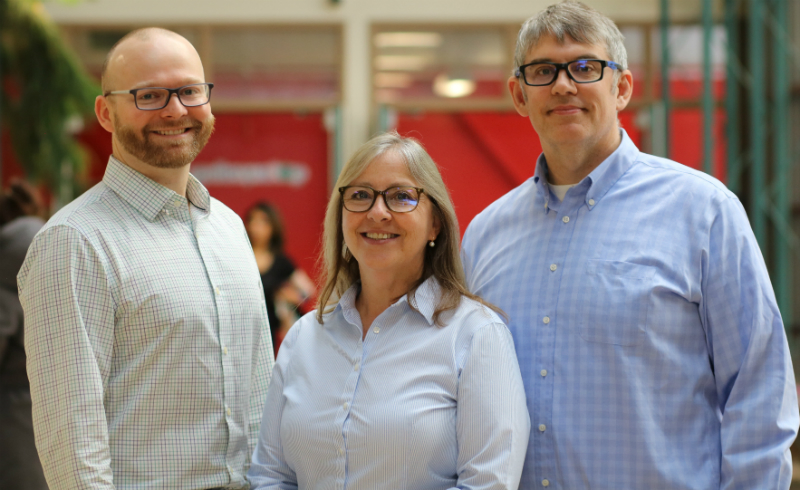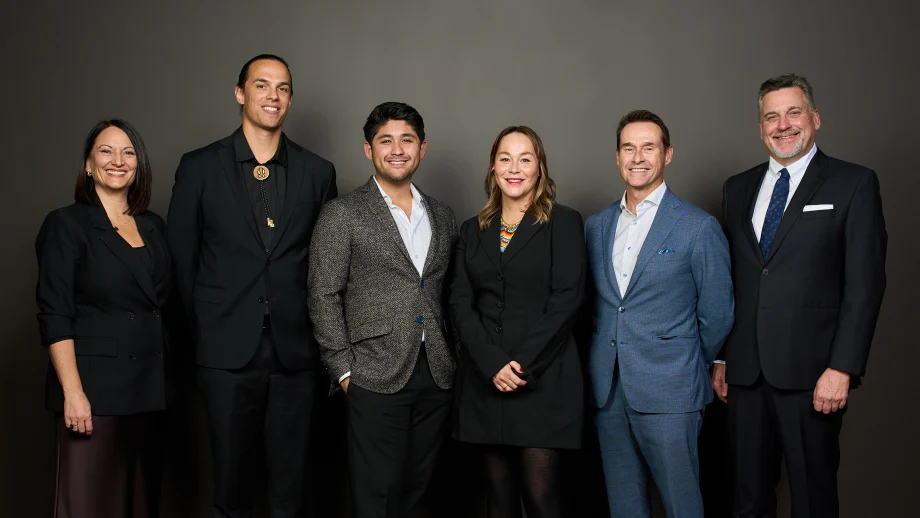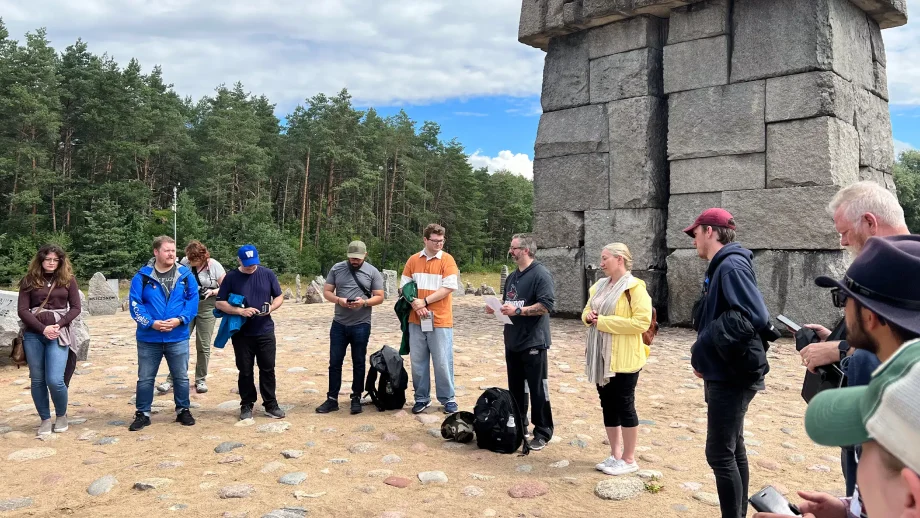
Drs. Christopher Henry, Joni Storie, Christopher Storie, ©UWinnipeg
A trio of UWinnipeg professors are collaborating with NTNU-Gjøvik, Norway to create maps of Norway thanks to a High North Grant. This project comes on the heels of the success of the previous High North Programme with NTNU-Gjøvik (UWinnipeg’s Dr. Patricia Fitzpatrick, geography, PI). The grant promotes a cross-cultural exchange of ideas that brings researchers together and allows for stronger institutional and interdisciplinary partnerships between fields of study including engineering, geography and computer science.
This project’s Principal Investigator Dr. Joni Storie will be working with fellow geographer Dr. Chris Storie and computer scientist Dr. Christopher Henry from UWinnipeg in collaboration with Dr. Rune Ødegård, the Principal Investigator at the Department of Manufacturing and Civil Engineering and Dr. Jon Yngve Hardeberg of the Department of Computer Science at NTNU-Gjøvik.
“We are really excited about this project,” said J. Storie. “Not only are we mapping Norway, we will be using open source data and software to help regional municipalities have access to the maps to help with decision making as well as incorporate student exchange opportunities in both geography, environmental studies and computer science from both universities.”
Based on the success of creating maps for the Province of Manitoba with a previous collaboration with Henry and C. Storie, using satellite images, neural networks and the technology of the Dr. Ezzat A. Ibrahim GPU Educational Lab, they plan to produce land cover classification maps for Norway using satellite images.
“We will be using satellite images from the Sentinel satellite to help Norway to take advantage of their investment in the new satellite,” explained C. Storie. “Utilizing these images will allow us to see and document the land changes for resource management and climate variability models of the northern region.”
These images will help provide us with a view of the land-cover at a fine scale so that we can translate that data into information for a computer program that will then create a map.
“The approach we have developed in collaboration with the province allows us to produce land cover classification maps hundreds of times faster than existing approaches,” said Henry. “An example of the efficiency of the new technology is what took 4800 hours to make one map now takes seven to ten days to train the computer which then can produce the map in 10 min with 90% accuracy. This means our approach is a substantial savings in cost with results that warrant the use of the new approach over current methods.”
The collaborative methods developed for this project can also be applied to other northern countries and will provide standardized products that allow for data harmonization and continuous monitoring over larger regions of the Arctic.




